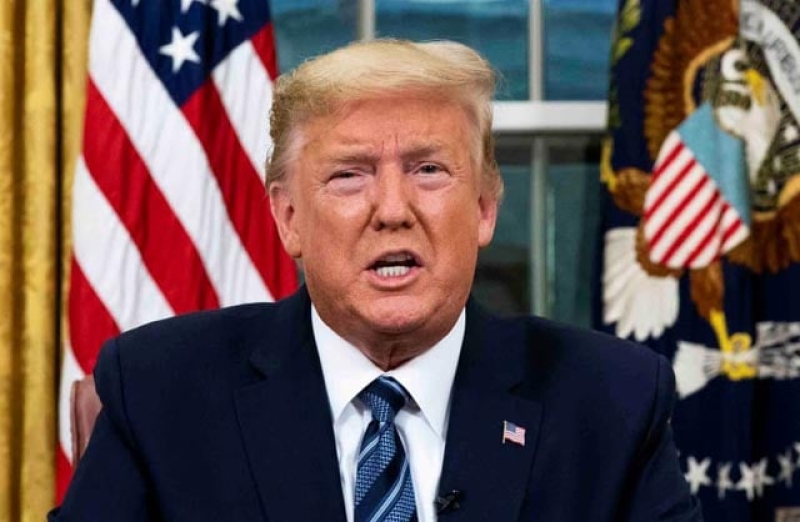- CA Yunus pays homage to Liberation War martyrs on Victory Day |
- Bangladesh capital market extends losing streak for second day |
- Bangladesh celebrates Victory Day Tuesday |
- 'Different govts presented history based on their own ideologies': JU VC |
Trump threatens 100% tariff on foreign-made films

In a post on his Truth Social platform Sunday night, Trump announced that he had directed the Department of Commerce and the U.S. Trade Representative to impose a 100% tariff on all movies produced outside the United States.
“The American film industry is dying rapidly,” Trump claimed, accusing other countries of luring filmmakers with generous incentives. He argued that this international competition poses a national security threat, calling it “messaging and propaganda” backed by foreign governments.
However, how such a tariff would be implemented remains unclear. Many film productions, including major blockbusters like the upcoming Mission: Impossible – The Final Reckoning, are typically shot across multiple countries, including the U.S.
Incentive programs for years have influenced where movies are shot, increasingly driving film production out of California and to other states and countries with favorable tax incentives, like Canada and the United Kingdom.
Yet tariffs are designed to lead consumers toward American products. And in movie theaters, American-produced movies overwhelming dominate the domestic marketplace.
China has ramped up its domestic movie production, culminating in the animated blockbuster “Ne Zha 2” grossing more than $2 billion this year. But even then, its sales came almost entirely from mainland China. In North America, in earned just $20.9 million.
The Motion Picture Association didn’t immediately respond to messages Sunday evening.
The MPA’s data shows how much Hollywood exports have dominated cinemas. According to the MPA, the American movies produced $22.6 billion in exports and $15.3 billion in trade surplus in 2023.
Trump has made good on the “tariff man” label he gave himself years ago, slapping new taxes on goods made in countries around the globe. That includes a 145% tariff on Chinese goods and a 10% baseline tariff on goods from other countries, with even higher levies threatened.
By unilaterally imposing tariffs, Trump has exerted extraordinary influence over the flow of commerce, creating political risks and pulling the market in different directions. There are tariffs on autos, steel and aluminum, with more imports, including pharmaceutical drugs, set to be subject to new tariffs in the weeks ahead.
Trump has long voiced concern about movie production moving overseas.
Shortly before he took office, he announced that he had tapped actors Mel Gibson, Jon Voight and Sylvester Stallone to serve as “special ambassadors” to Hollywood to bring it “BACK—BIGGER, BETTER, AND STRONGER THAN EVER BEFORE!”
U.S. film and television production has been hampered in recent years, with setbacks from the COVID-19 pandemic, the Hollywood guild strikes of 2023 and the recent wildfires in the Los Angeles area. Overall production in the U.S. was down 26% last year compared with 2021, according to data from ProdPro, which tracks production.
The group’s annual survey of executives, which asked about preferred filming locations, found no location in the U.S. made the top five, according to the Hollywood Reporter. Toronto, the U.K., Vancouver, Central Europe and Australia came out on top, with California placing sixth, Georgia seventh, New Jersey eighth and New York ninth.
The problem is especially acute in California. In the greater Los Angeles area, production last year was down 5.6% from 2023 according to FilmLA, second only to 2020, during the peak of the pandemic. Last, October, Gov. Gavin Newsom proposed expanding California’s Film & Television Tax Credit program to $750 million annually, up from $330 million, reports UNB.

